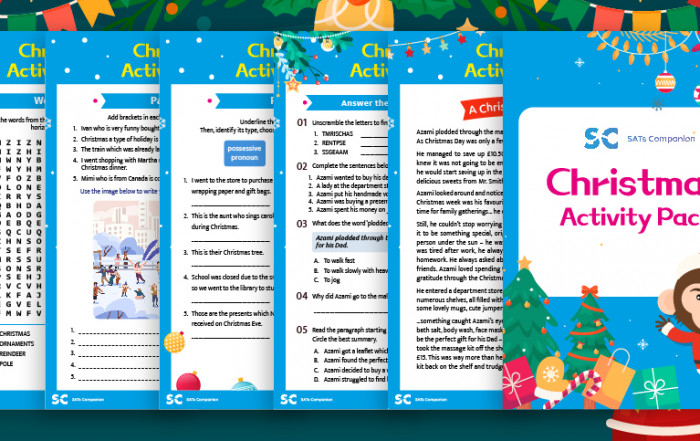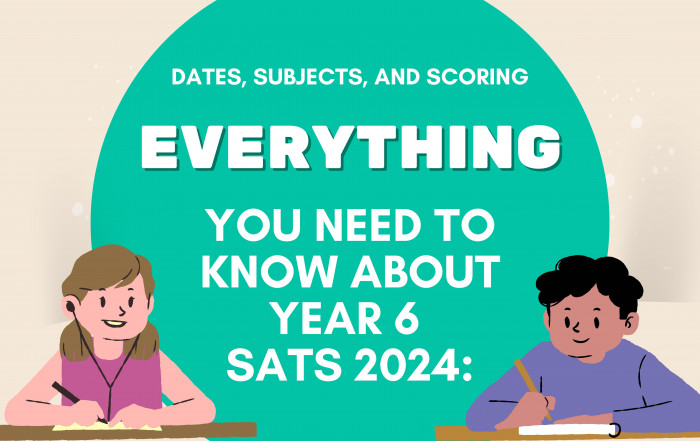How to prepare for the SATs Reading test at home
The KS2 SATs can be tricky to get to grips with, but whether we loathe them or think they are important, the vast majority of primary pupils do sit the tests. If you are looking for ways to support your child with the KS2 SATs tests, we’re here to help.
So, what does the KS2 SATs Reading test include? The SATs Reading Test lasts for an hour and includes both fiction and non-fiction texts which typically have some kind of a link. There is usually three texts to read through and a selection of questions to answer.
Children receive copies of the texts and an answer booklet with questions and spaces for their answers. Each question can be awarded with either 1, 2 or 3 marks. This part of the SAT Tests, requires the children to use parts of the text in order to answer the questions. While some questions require deduction, where one has to draw their own conclusions using reasoning skills, there are others where the children will be asked about their own opinion.
Let’s take a look at a sample question from 2016.
Example from past SATs reading test
Text:
For thousands of years the island of Mauritius was a paradise. It was spat out of the ocean floor by an underwater volcano 8 million years ago. With warm sun, plentiful food and no predators to speak of, the isolated island became a haven for a variety of unusual species, including reptiles and flightless birds. Then, in 1598, humans descended on this paradise, accompanied by their own animals; dogs, goats, cats (and a fair number of rats!). Curious and unafraid, the animals of Mauritius offered themselves up for slaughter and, within just a few decades, much of the island’s unique wildlife had been wiped out forever.
Here are some of the questions that were asked in relation to this text.
Questions:
Word choices
1. Look at the paragraph beginning: For thousands of years…
What does the word spat suggest about how the island of Mauritius was formed?
Deduction
2. Curious and unafraid, the animals of Mauritius offered themselves up for slaughter…
Why were the dodos curious and unafraid?
Thus, the tips which we have prepared will help your child accelerate in the SATs Reading test! Just keep on reading below.

Finding the right answer
How to find the right answer? Finding the right bit of text is a vital feature. This skill could relate to the detective chasing down leads or it could relate to the job of an archaeologist, “collecting artefacts to piece a story together. And as in both of the cases the key is persistence and continuity.”
How to start?
Start by reading the whole text and then move to the questions and keep in mind what the answers could be. Now, go back to the text and start skimming through specific parts, which will help support the chosen answers.
It is important that your child can articulate a reason why and how they have come to an answer. Spend some time discussing with your child the meaning of ‘justifying your words’ and why is it important.
Start by using familiar examples like ‘justify why you should be able to have a sleepover or why you should have a chocolate, or why you should go to the school trip.
Now relate it back to the text. Why do you think the author has chosen this specific word? Justify your answer.
Colour Highlighting
Another very helpful activity which can support the process is using colour markers and pens! Take an engaging piece of text and ask your child to colour code specific parts in relation to the different questions. Writing the questions on a board or a piece of paper could be helpful as your child can always look back and refer much easily to the text. This also improves speed of reading and answering!

Use different texts
Often, kids engage much easier with fictional texts about magicians, superheroes or creatures rather than non-fiction or informative texts. Despite this, on the SATs reading test there is likely to be both types. Make sure you give various texts to your child to read, not solely the more preferred ones. For example, allow them to read parts of the morning newspaper and then a passage from a children’s novel. Simply mix both so your Year 6 child gets used to them.
Taking notes
Learning how to take notes can also help your child progress. Try circling important words from the text and then taking brief notes about the overall theme. Teach your child to grasp upon the turning points of the text, alongside noting down some key names, situations or places. How do we know those are the key points of the text? Again, ask your child to justify their answers. It’s always useful to make a list of questions we might have about the text after reading it. Good readers challenge what they’re reading by asking lots of questions.
As with everything practice is the key to success, so preferably repeat these various exercises with your child. Start off by working with your child and then move to a guided practice and finally to independent work. This will definitely make a change in their confidence and performance, and during the test they will feel much more comfortable and self-assured!
Check out our most recent blog posts…..
Follow us on social media to receive free resources, tips and special offers.








Leave A Comment
You must be logged in to post a comment.